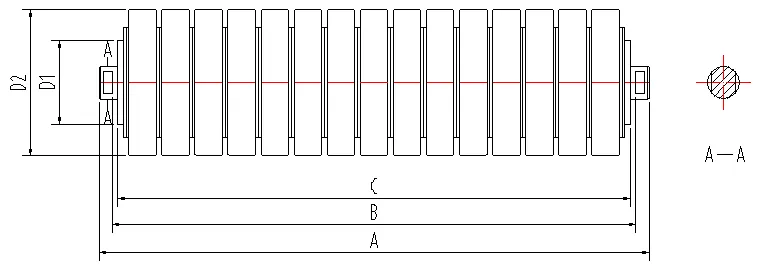 Afrikaans
Afrikaans  Albanian
Albanian  Amharic
Amharic  Arabic
Arabic  Armenian
Armenian  Azerbaijani
Azerbaijani  Basque
Basque  Belarusian
Belarusian  Bengali
Bengali  Bosnian
Bosnian  Bulgarian
Bulgarian  Catalan
Catalan  Cebuano
Cebuano  Corsican
Corsican  Croatian
Croatian  Czech
Czech  Danish
Danish  Dutch
Dutch  English
English  Esperanto
Esperanto  Estonian
Estonian  Finnish
Finnish  French
French  Frisian
Frisian  Galician
Galician  Georgian
Georgian  German
German  Greek
Greek  Gujarati
Gujarati  Haitian Creole
Haitian Creole  hausa
hausa  hawaiian
hawaiian  Hebrew
Hebrew  Hindi
Hindi  Miao
Miao  Hungarian
Hungarian  Icelandic
Icelandic  igbo
igbo  Indonesian
Indonesian  irish
irish  Italian
Italian  Japanese
Japanese  Javanese
Javanese  Kannada
Kannada  kazakh
kazakh  Khmer
Khmer  Rwandese
Rwandese  Korean
Korean  Kurdish
Kurdish  Kyrgyz
Kyrgyz  Lao
Lao  Latin
Latin  Latvian
Latvian  Lithuanian
Lithuanian  Luxembourgish
Luxembourgish  Macedonian
Macedonian  Malgashi
Malgashi  Malay
Malay  Malayalam
Malayalam  Maltese
Maltese  Maori
Maori  Marathi
Marathi  Mongolian
Mongolian  Myanmar
Myanmar  Nepali
Nepali  Norwegian
Norwegian  Norwegian
Norwegian  Occitan
Occitan  Pashto
Pashto  Persian
Persian  Polish
Polish  Portuguese
Portuguese  Punjabi
Punjabi  Romanian
Romanian  Russian
Russian  Samoan
Samoan  Scottish Gaelic
Scottish Gaelic  Serbian
Serbian  Sesotho
Sesotho  Shona
Shona  Sindhi
Sindhi  Sinhala
Sinhala  Slovak
Slovak  Slovenian
Slovenian  Somali
Somali  Spanish
Spanish  Sundanese
Sundanese  Swahili
Swahili  Swedish
Swedish  Tagalog
Tagalog  Tajik
Tajik  Tamil
Tamil  Tatar
Tatar  Telugu
Telugu  Thai
Thai  Turkish
Turkish  Turkmen
Turkmen  Ukrainian
Ukrainian  Urdu
Urdu  Uighur
Uighur  Uzbek
Uzbek  Vietnamese
Vietnamese  Welsh
Welsh  Bantu
Bantu  Yiddish
Yiddish  Yoruba
Yoruba  Zulu
Zulu Conveyor System Parts and Accessories for Optimal Performance and Efficiency
Understanding Conveyor Components and Parts
Conveyor systems play a pivotal role in modern industries, facilitating the efficient movement of goods and materials from one point to another. Whether it's in manufacturing, warehousing, or distribution centers, conveyors streamline operations and enhance productivity. However, the efficiency of a conveyor system largely depends on its components and parts. Understanding these elements is crucial for effective system design, maintenance, and troubleshooting.
1. Belt Systems
At the heart of many conveyor systems lies the belt. Conveyor belts come in various types and materials, including rubber, PVC, and stainless steel, each designed for specific applications depending on the material being transported. The choice of belt affects the system's durability, flexibility, and load capacity. For instance, heavy-duty belts are essential for transporting bulky items, while modular belts may be better for smaller, lighter products.
2. Drive Mechanisms
The drive mechanism is responsible for powering the conveyor system. It consists of a motor connected to the system’s pulleys. The most common types of drive mechanisms include electric motors, geared motors, and hydraulic drives. The choice of the drive will depend on factors such as the required speed, load capacity, and operational environment. Proper sizing and selection of the drive motor are essential for optimal conveyor performance and efficiency.
3. Pulleys and Rollers
Pulleys and rollers support the conveyor belt and facilitate its movement. Pulleys are usually located at the ends of the conveyor, serving as the driving unit that pulls the belt. Rollers, often placed at intervals along the conveyor, reduce friction and support the weight of the conveyed items. Both components come in various designs, including drum, flat, and tapered shapes, depending on the application's needs.
4. Idlers
conveyor components & parts

Idlers are critical components that support the belt and help maintain its shape and tension. They are designed to minimize belt sag and prevent excessive wear. There are several types of idlers, such as trough idlers, return idlers, and impact idlers, each serving a specific function. Proper maintenance of idlers is essential, as worn or misaligned idlers can lead to belt misalignment and reduced efficiency.
5. Sensors and Controls
Modern conveyor systems often incorporate sensors and control systems for automation and monitoring. Photoelectric sensors, proximity sensors, and load cells are commonly used to track the position and weight of items on the conveyor. Control systems can be programmed to adjust the speed of the conveyor, detect jams, or change the route of goods. These technologies enhance operational efficiency and reduce the risk of errors.
6. Safety Features
Safety is a paramount concern in conveyor design. Components such as emergency stop buttons, safety guards, and light curtains are essential for protecting workers and preventing accidents. Regular maintenance and inspection of these safety features are vital to ensure their proper function, as neglect can lead to severe injuries or equipment damage.
7. Maintenance and Troubleshooting
Regular maintenance of conveyor components is crucial for long-term reliability. This includes checking for wear and tear on belts, tightening loose components, and ensuring that all electronic controls are functioning correctly. Troubleshooting common issues, such as belt slippage, misalignment, or excessive noise, can often be resolved by inspecting these key components.
Conclusion
In summary, conveyor components and parts are integral to the operation of conveyor systems across various industries. A deep understanding of these components helps in making informed decisions regarding system design, maintenance, and troubleshooting. By ensuring that every part operates efficiently, businesses can enhance productivity, reduce downtime, and ultimately boost their bottom line. As industries continue to evolve, advancements in conveyor technology promise even greater innovations in design and functionality, paving the way for more efficient material handling solutions.
-
Revolutionizing Conveyor Reliability with Advanced Rubber Lagging PulleysNewsJul.22,2025
-
Powering Precision and Durability with Expert Manufacturers of Conveyor ComponentsNewsJul.22,2025
-
Optimizing Conveyor Systems with Advanced Conveyor AccessoriesNewsJul.22,2025
-
Maximize Conveyor Efficiency with Quality Conveyor Idler PulleysNewsJul.22,2025
-
Future-Proof Your Conveyor System with High-Performance Polyurethane RollerNewsJul.22,2025
-
Driving Efficiency Forward with Quality Idlers and RollersNewsJul.22,2025





























